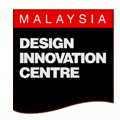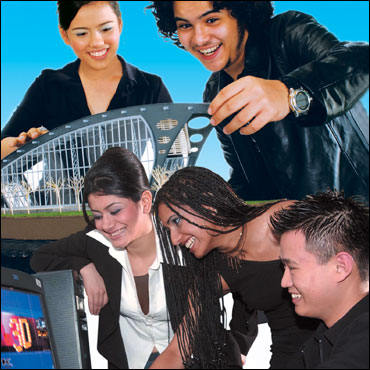Human capital will be the crucial driver of growth in Malaysia’s concerted efforts to build a knowledge-based economy and information-rich society that can compete with the best in the world.
A major thrust in this development plan is the upgrading of the quality of education and training in the country.†So far, the numbers are adding up well. The percentage of the local labour force with tertiary education improved from 15.2 per cent in 2000 to 19 per cent in 2003, with the target set at a minimum 35 per cent by 2010.
Enrolment at the degree level in public universities rose from 201,271 in 2000 to 250,480 in 2003. Private institutions of higher learning have another 300,000 Malaysian students. In the 17-23 age group, the participation rate in tertiary education went up from 25 per cent in 2000 to 27.9 per cent in 2003. The target is 40 per cent by 2010.
In the Knowledge-based Economy Development Index that assesses Malaysia’s readiness to become a knowledge-based economy, we are in 17th position relative to 21 other mainly developed countries. Ahead of us on the KDI are all advanced economies, topped by the United States, Japan, Sweden, Finland and Norway. South Korea is ranked 15th, Singapore 16th, Thailand 18th, China 19th and the Philippines 20th.
In research and development, Malaysia spent the equivalent of 0.5 per cent of its Gross Domestic Product in 2000 compared to 2.65 per cent by the United States, 2.8 per cent by Japan and 2.38 per cent by Germany.†Malaysia plans to raise the ratio of R&D expenditure to 1.5 per cent of GDP by 2010.
In terms of manpower for R&D, Malaysia had 15.6 researchers per 10,000 labour force compared to Japan’s 136, the US’ 74 and South Korea’s 60. In patents registration, official figures show that less than 5 per cent or only 271 of the 6,000 patents applied through Malaysia in 2001 were from local companies. Japan’s Matsushita corporation alone files 15,000 applications for patents registration annually. These data show that the rapid expansion in tertiary education facilities in recent years has substantially improved the educational attainment level of the population and labour force.
However, much more need to be done to produce human capital who also understand how to drive creativity to arrive at innovation.
Creating an inspiring and innovative learning environment
Malaysians are naturally gifted with creative abilities and inclinations. What is needed is to put in place the right teaching and learning culture that will bring out the best in our young. Our education system must be one that can effectively play a facilitating role, and be a motivational driving force.
It must not be inflexible because creativity itself is a dynamic agent of change. Breaking the norm, not accepting all that is handed down, and continuously seeking better and more practical solutions or more competitive options are central to the creative process.
The learning environment should be one that is inspiring, not stifling; innovative, not just administrative. Rules and regulations that encourage people to concentrate on not making mistakes will lead to conformity and compliance, and inhibit creativity and innovation. Rules and regulations that attempt to impose a one-size-fits-all structure will hamper the efforts of institutions of higher learning to become effectively competitive.
If we keep doing the same thing, we will soon be out of step, out of touch, and then out of date. Several years ago, a regional magazine ranked Malaysia’s oldest university, Universiti Malaya, at 43rd position out of 77 universities in Asia in overall excellence.
The establishment of the new Higher Education Ministry is, therefore, most timely. The Minister, Datuk Dr Shafie Mohd Salleh, has made the promotion of quality in higher education his top priority. He is also very determined on making Malaysia a world centre of education for developing countries. In his effort to further improve the delivery of education in the country, he is expected to expedite the process of approval or renewal of course programmes while adopting a flexible approach that allows room for innovation. The Minister’s initiatives will definitely be welcomed by both public and private educational institutions.
Malaysia hosts close to 40,000 foreign students and hopes to increase the number to 50,000 by next year. Private colleges must be given credit for this heartening development. But international education is a highly competitive industry. Failure to face up to the challenge of change will almost surely mean losing advantage in the marketplace, and ultimately see the more creative competition take control.
We need not aim to beat the long-established universities in some of the developed countries which have been there for the last 500 years and which are perceived as among the best in the world. But if we tailor our programmes for students from the developing world so innovatively that they just have to come here, then we will be ahead of the western universities in meeting the needs of this market.
Adopting a culture of flexibility, based on market needs and realities, will lead to changes that suit the learning environment. That can produce a quantum leap in mindset change, and foster the pioneering spirit that has driven the remarkable achievements of many Malaysian entrepreneurs since independence. Going forward, we must build for our nation a big passion for innovation.
The limitless possibilities of the creative mind
Thanks to the amazing advances brought on by the creative mind, the world today is nothing like the one into which our parents were born.† The creative minds that came before us did a lot of things that effectively changed the world they lived in.
What used to take years can now be done in a matter of days and, soon, hours. What used to require the combined energy of a thousand people can now be comfortably managed by a single person working on a single personal computer.
The cellular phone is now a radio, a calculator, a camera, a video recorder, a TV monitor, a computer and, soon, your health monitor. It is so small you can hide it behind your ear. It used to be so heavy it had to be carried by two people. The size of your laptop used to be the size of a hall. The first commercial computer took up 15,000 sq ft of space, and that was in 1955 – just about 50 years ago.
All these are thanks to the men and women whose passion to explore and create has resulted in amazing advances that changed so much the way we live, the things we do and the way we work. These are people driven by their passion for innovation, whose efforts in making things better have brought about unimaginable advances to everything imaginable.
Starting them young
To be an innovative nation capable of competing successfully around the world and being a leader in Asia, we will need to produce more of this kind of people. We will need to start early, at the primary one school level. We have to develop a system of training that nurtures and inspires the young generation to be people who want to achieve greatness. We must have a vision that they can share, a strategy that they can apply, a goal that they can aim for and be a part of.
Our school system has to be more creative in order to allow students to arrive at creative solutions. We should have fewer one right answer solutions. We should move into a situation where there can be many right answers, and not just black and white answers.
In many advanced countries, school children learn about design technology from year one and move on to innovation a few years later. These countries see creativity as a key component of early education.
The moment you get into design technology, you are already into the process of ideation; you are thinking creatively in order to design things differently; you learn about the purpose of differentiation and the pivotal role that design can play. Thinking creatively becomes a habit.
Our people have been building their businesses and making their money from landed property. We have not moved on to developing intellectual property that can earn us an income over and over again, and in more and more countries around the world.
We are still very much stuck to manufacturing goods on OEM (original equipment manufacturing) franchise. We have not really moved on to original design manufacturing (ODM), and never mind original brand manufacturing (OBM).
The time to move on is now, and time is not really on our side. Unless we get very serious about promoting creativity and innovation, the transformation to a knowledge-based economy will not readily happen. And unless that transformation happens, our competitiveness will erode.


